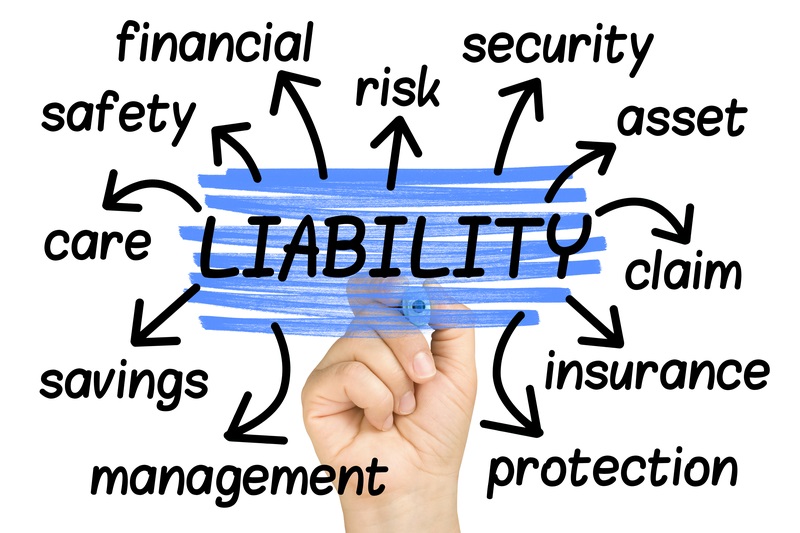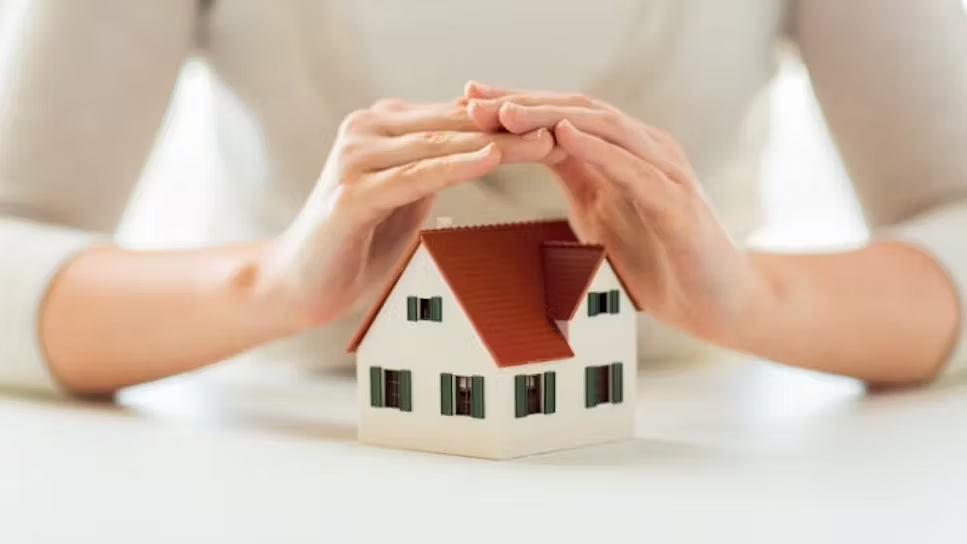Buying a home is one of the biggest investments most people make in their lifetime. Whether you own a cozy apartment, a suburban house, or a sprawling estate, protecting your property against unexpected losses is crucial. This is where home insurance comes into play. But what exactly is home insurance, and why is it essential for homeowners? This article explores the concept of home insurance in detail, its benefits, types, coverage, and how it protects you financially.
Key Takeaway
Home insurance is an essential safeguard against potential financial losses resulting from damage, theft, or liability associated with your home. To ensure adequate protection, choose a policy based on your home’s replacement cost, personal belongings value, and local risks. Regularly review and update your coverage to keep pace with changes in your life and property. Proper home insurance is not just a legal or lender requirement—it’s peace of mind that your home and loved ones are protected.
Understanding Home Insurance
Definition of Home Insurance
Home insurance, also known as homeowners insurance, is a type of property insurance that provides financial protection against damages or losses to your home and belongings caused by perils such as fire, theft, natural disasters, and other risks. It typically covers both the physical structure of your home and the possessions inside it. In addition, many home insurance policies also provide liability protection if someone is injured on your property.
Why Home Insurance Matters
Imagine waking up one morning to find that a fire has severely damaged your house, or that burglars have stolen your valuable possessions. Without home insurance, you would have to bear the entire financial burden of repairs, replacement, or legal costs. Home insurance acts as a safety net, offering peace of mind and financial support when unexpected events occur.
Types of Home Insurance Policies
Home insurance is not a one-size-fits-all product. Different homeowners have different needs, and insurance companies have developed multiple policy types to cater to these varying requirements. Understanding each type can help you select the coverage best suited to your living situation and financial goals.
HO-1 Basic Form (Limited Coverage)
The HO-1 policy is the most fundamental and limited form of home insurance. It covers only a specific set of perils, such as:
- Fire or lightning
- Windstorm or hail
- Explosion
- Riot or civil commotion
- Damage caused by aircraft
- Vehicles
- Smoke
- Vandalism or malicious mischief
- Theft
- Volcanic eruption
Key Points:
- Coverage: Very narrow and minimal.
- Usage: Rarely offered nowadays due to limited protection.
- Best For: Older homes or homes with fewer valuable contents, and buyers who want the most affordable policy.
Because it excludes many common risks, most insurers and homeowners prefer more comprehensive coverage options.
HO-2 Broad Form
The HO-2 policy is broader than HO-1 and covers more named perils, including those listed above plus:
- Falling objects (e.g., tree branches)
- Weight of ice, snow, or sleet causing damage
- Freezing of plumbing, heating, or air conditioning systems
- Sudden and accidental damage from artificially generated electrical current (power surges)
- Accidental discharge or overflow of water or steam from plumbing
Key Points:
- Coverage: Named-peril coverage, meaning only risks specifically listed in the policy are covered.
- Personal Property: Also covered for named perils.
- Best For: Homeowners wanting broader protection than HO-1 but who don’t want or need full open-peril coverage.
However, risks like floods and earthquakes remain excluded and require separate policies.
HO-3 Special Form (Most Common and Recommended)
The HO-3 is the most popular and widely purchased policy in the U.S. because of its comprehensive coverage for the home structure and flexible coverage for personal belongings.
- Dwelling coverage: Open-peril or “all-risk” coverage, which means all perils are covered except those specifically excluded (such as floods, earthquakes, war, and neglect).
- Personal property: Covered on a named-peril basis (similar to HO-2), meaning your possessions are protected against specified risks.
- Exclusions: Common exclusions like flood, earthquake, sewer backup, and wear and tear.
Key Points:
- Comprehensive protection for the home structure.
- Popular choice: Combines broad dwelling coverage with named peril coverage for belongings.
- Best For: Most homeowners who want solid protection for both their home and possessions.
HO-4 Renters Insurance
If you don’t own the home but rent an apartment or house, the HO-4 policy is designed for you.
- Dwelling coverage: Not applicable because the landlord insures the structure.
- Personal property coverage: Protects your belongings inside the rented space.
- Liability coverage: Included to protect you if someone is injured in your rented home.
- Additional living expenses: Covers costs if you must temporarily relocate due to a covered peril.
Key Points:
- Designed for renters.
- Focuses on personal property and liability, not the building itself.
- Affordable and essential for tenants.
HO-5 Comprehensive Form
The HO-5 policy offers the most extensive coverage and is considered a premium home insurance plan.
- Dwelling and personal property: Both covered on an open-peril basis, meaning all risks are covered unless explicitly excluded.
- Higher limits: Often includes higher coverage limits and fewer exclusions on valuables.
- Additional protections: May include enhanced coverage for expensive items like jewelry, art, and collectibles without the need for separate riders.
Key Points:
- Top-tier, broadest protection for home and belongings.
- Higher premiums but greater peace of mind.
- Best for homeowners with valuable possessions or newer, higher-value homes.
HO-6 Condo Insurance
Condominium owners face unique insurance needs because the condo association usually insures the building’s exterior and common areas, but not your unit’s interior or belongings.
- Dwelling coverage: Covers the interior walls, floors, ceilings, and any improvements or upgrades you’ve made inside your unit.
- Personal property: Covers your belongings inside the condo.
- Liability coverage: Protects you if someone is injured inside your unit.
- Loss of use: Covers additional living expenses if your unit is uninhabitable due to damage.
Key Points:
- Tailored for condo owners.
- Complements the condo association’s master policy.
- Important for protecting your personal space and belongings.
HO-7 Mobile Home Insurance
Mobile and manufactured homes have different construction and placement considerations, so they require specialized insurance policies.
- Covers: The mobile home structure, personal property, and liability.
- Additional considerations: Coverage may extend to attachments like decks or carports.
- Location risks: Policies may account for the mobile home’s location, such as parks or private land.
Key Points:
- Specifically for mobile or manufactured homes.
- Offers similar protections to HO-3 but customized for mobile home structures.
- Often requires separate underwriting.
HO-8 Older Home Insurance
Older homes present unique insurance challenges because their replacement cost may not match current market values, and repairs may require specialized materials or craftsmanship.
- Coverage: Based on the home’s actual cash value (replacement cost minus depreciation), which can result in lower payout.
- Limited dwelling coverage: Designed to help with the cost of restoring an older home.
- Personal property and liability: Typically covered similarly to other policies.
Key Points:
- For older homes where replacement cost exceeds market value.
- Helps homeowners insure older properties more affordably.
- May not cover all modern building code upgrades unless specifically endorsed.
What Does Home Insurance Cover?
A home insurance policy is designed to protect your investment in your house and your personal belongings. It also safeguards you financially if you are held liable for accidents that occur on your property. However, coverage varies by policy and insurer, so it’s important to understand what is generally included and what is excluded.
Dwelling Coverage

This is the core part of your home insurance policy. It covers the physical structure of your home, including:
- Walls and roof
- Floors and ceilings
- Built-in appliances like ovens, dishwashers, and HVAC systems
- Attached structures such as garages or decks
If your home is damaged or destroyed due to covered risks—such as fire, lightning, hail, windstorm, or vandalism—your insurer will pay to repair or rebuild the home up to your policy limit. This helps you avoid massive out-of-pocket costs for rebuilding.
Important Details:
- The payout is usually based on replacement cost, which means rebuilding your home at current market prices, not the original purchase price or market value.
- It’s essential to insure your home for an amount that reflects the true replacement cost, not just the market value.
Other Structures Coverage
This part covers detached structures on your property, which are not physically attached to your house but are still your responsibility. Examples include:
- Detached garages
- Storage sheds
- Fences and gates
- Swimming pools
- Gazebos or patios
These structures are generally covered for the same perils as your main dwelling, and coverage is often a percentage (e.g., 10%) of your dwelling coverage limit.
Personal Property Coverage
This coverage protects the contents inside your home, including:
- Furniture (sofas, beds, tables)
- Electronics (TVs, computers, smartphones)
- Clothing and personal items
- Jewelry, artwork, and collectibles (often with limits)
- Kitchen appliances and other personal belongings
If your belongings are stolen, damaged, or destroyed by a covered peril, your insurer will reimburse you up to your personal property limits.
Important Details:
- Many policies have sub-limits on valuables like jewelry or artwork. You may need additional riders or endorsements for full coverage of high-value items.
- Coverage typically applies both inside and outside your home (e.g., stolen from your car or during travel).
Liability Protection

Liability coverage is designed to protect you financially if someone is injured on your property or if you cause accidental damage to others’ property. This includes:
- Medical expenses if a guest is injured on your property
- Legal fees and court costs if you’re sued
- Settlement or judgment amounts if you are found liable
Examples:
- A visitor slips and falls on your icy driveway.
- Your child accidentally damages a neighbor’s window with a baseball.
- Your dog bites a guest.
Liability coverage helps protect your assets and future earnings from legal claims.
Additional Living Expenses (ALE)

If your home becomes uninhabitable due to damage from a covered peril (like fire or severe storm), ALE coverage helps pay for:
- Temporary housing (hotel or rental)
- Meals
- Laundry services
- Other reasonable living expenses while your home is being repaired or rebuilt
This coverage ensures you and your family aren’t left stranded or forced to pay out of pocket for temporary accommodations.
What Home Insurance Typically Does Not Cover
While home insurance policies are quite comprehensive, certain risks are usually excluded or limited. You may need separate policies or endorsements to cover these:
Floods
- Standard home insurance policies do NOT cover flood damage caused by rising water from heavy rains, storms, or overflowing rivers.
- To protect against floods, you need a separate flood insurance policy, often available through the National Flood Insurance Program (NFIP) or private insurers.
Earthquakes
- Damage caused by earthquakes is generally excluded from standard home insurance.
- In earthquake-prone areas, you will need a separate earthquake insurance policy to cover structural damage and personal property loss.
Maintenance Issues
- Damage due to neglect, wear and tear, mold, pest infestations, or faulty workmanship is not covered.
- Homeowners are responsible for regular maintenance and repairs.
Sewer and Drain Backups
- Damage caused by sewer backups or water escaping from drains is usually excluded.
- Many insurers offer sewer backup endorsements or riders that you can add for an additional premium.
War, Nuclear Hazards, and Terrorism
- Damage resulting from war, nuclear accidents, or acts of terrorism is typically excluded.
- Some policies may offer limited coverage for terrorism with special endorsements.
Additional Optional Coverages and Endorsements
You can often purchase add-ons to cover specific risks or valuable items, such as:
- Extended or guaranteed replacement cost: Pays more than the dwelling limit if rebuilding costs exceed the policy limit.
- Personal property floaters: For high-value items like jewelry, fine art, or collectibles.
- Identity theft protection
- Equipment breakdown coverage for appliances and home systems
- Water backup coverage for sewer or drain backups
Why Do You Need Home Insurance?
Protects Your Investment

For most people, their home represents their largest single asset. Whether it’s a modest house or a luxury property, the financial commitment involved is substantial. Home insurance safeguards this investment by covering damages caused by unforeseen events such as:
- Fire: A devastating fire can destroy your home and belongings within minutes.
- Natural disasters: Damage from storms, hail, wind, and lightning can be costly to repair.
- Theft and vandalism: Burglary or intentional damage can lead to expensive losses.
Without insurance, you would have to cover repair or rebuilding costs entirely out of pocket. Home insurance ensures you can restore your property without a devastating financial setback.
Lender Requirement
If you took out a mortgage to purchase your home, your lender almost certainly requires you to maintain home insurance throughout the loan term. This is because:
- The lender has a financial interest in the property until the mortgage is fully paid.
- Insurance protects the lender’s investment by ensuring the property can be repaired or rebuilt if damaged.
- Failing to maintain insurance can result in the lender purchasing forced-place insurance on your behalf, which is often much more expensive and offers limited coverage.
Even if you own your home outright, maintaining insurance is a smart financial decision to protect your asset.
Peace of Mind
Homeowners face many uncertainties—natural disasters, accidents, theft, or liability claims. Having home insurance provides peace of mind by knowing that you have financial protection in place. This reassurance lets you:
- Focus on enjoying your home without constant worry about potential losses.
- Avoid the stress of handling costly repairs or replacements without financial help.
- Plan your finances better knowing you have a safety net.
Peace of mind is invaluable, especially when facing unpredictable events.
Covers Liability Risks
Accidents happen, and sometimes they occur on your property or involve your family. Home insurance includes liability coverage, which protects you from financial loss if you are held responsible for:
- Injuries to guests who slip and fall on your property.
- Damage you or your family accidentally cause to neighbors’ property.
- Legal fees, medical bills, and settlement costs if someone sues you for these damages.
Without liability coverage, these expenses could come out of your personal savings, potentially leading to severe financial hardship.
Helps Recover From Disasters
In the unfortunate event that your home is damaged or destroyed, home insurance helps you recover quickly by:
- Paying for repairs or rebuilding your home to its original condition.
- Replacing lost or damaged personal belongings so you can restore your lifestyle.
- Covering the cost of temporary housing and living expenses if you cannot live in your home during repairs.
This financial support is crucial to avoid prolonged displacement and help you get your life back to normal as soon as possible.
Additional Reasons to Consider
Financial Stability: Unexpected disasters can lead to financial ruin. Insurance helps preserve your savings and creditworthiness by preventing you from incurring large debts to cover damages.
Protection Against Lawsuits: Beyond injuries on your property, liability coverage can extend to incidents involving your pets, personal actions, or even damage caused by your children.
Coverage for Additional Structures: Insurance also protects garages, fences, pools, and other structures on your property.
How to Choose the Right Home Insurance Policy
| Step | Details |
|---|
| 1. Assess Your Home’s Value | Focus on the replacement cost of your home, which is the amount needed to rebuild it, rather than the market value. This ensures your dwelling coverage is adequate to fully repair or replace your home after damage. |
| 2. Inventory Your Personal Property | Create a detailed list of your belongings, including furniture, electronics, clothing, and valuables. Estimate their value so you can select sufficient personal property coverage to protect your possessions from loss or damage. |
| 3. Evaluate Risks Specific to Your Location | Identify environmental risks in your area such as floods, earthquakes, or hurricanes. Since these are often excluded from standard policies, consider purchasing additional coverage or endorsements tailored to those risks. |
| 4. Compare Quotes | Obtain quotes from multiple insurance companies to compare premium costs, coverage limits, deductibles, and policy terms. This helps you find the best value and ensures you’re not overpaying. |
| 5. Check the Insurer’s Reputation | Research the insurer’s financial stability through ratings agencies like A.M. Best, Moody’s, or Standard & Poor’s. Also, review customer feedback and complaint records to ensure quality customer service and efficient claims handling. |
| 6. Understand Deductibles | Choose a deductible amount that balances premium costs and potential out-of-pocket expenses. A higher deductible lowers your premium but means you pay more in case of a claim; a lower deductible increases your premium but reduces immediate costs when filing a claim. |
Tips to Lower Your Home Insurance Premiums
- Bundle your home insurance with auto or other policies.
- Install home security systems and smoke detectors.
- Maintain good credit score.
- Increase your deductible if you can afford higher upfront costs.
- Review your policy annually to adjust coverage as needed.
Also Read : What Are the Current Personal Loan Interest Rates in 2025?
Conclusion
Home insurance is a critical part of responsible homeownership. It protects your property and valuables from unforeseen events, offers liability protection, and provides peace of mind. While choosing a policy can seem complex, understanding the basics of coverage, risks, and how to shop for insurance can help you find the right protection tailored to your needs. Investing in home insurance is essentially investing in your financial security and stability.
FAQs
1. Is home insurance mandatory?
While not legally mandatory, mortgage lenders usually require it to protect their investment.
2. How much home insurance coverage do I need?
Coverage should equal the replacement cost of your home plus personal belongings. Many experts recommend 100% replacement cost coverage.
3. Does home insurance cover natural disasters?
It depends on the disaster. Fire and windstorm damage are typically covered, but floods and earthquakes usually require separate policies.
4. Can I add coverage for expensive items?
Yes, high-value items like jewelry or art may need additional riders or endorsements.
5. What is a deductible in home insurance?
The deductible is the amount you pay out-of-pocket before insurance covers the rest of the claim.
6. How do insurance claims affect my premium?
Filing claims can increase premiums, so it’s best to only file for significant losses.
7. Can I change my home insurance policy anytime?
Yes, you can usually change or switch policies, but consider timing to avoid lapses in coverage.


